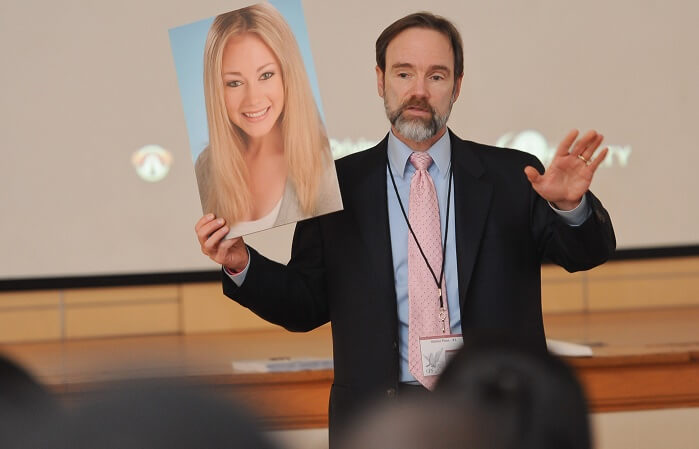'Dad, I Don't Feel Safe'
What we can learn from kids during Distracted Driving Awareness Month
What we can learn from kids during Distracted Driving Awareness Month

There is something terribly wrong about a parent texting while driving with their child in the car, yet it happens with regularity. Since my 21-year-old daughter, Casey, was killed by a distracted driver in 2009, I have given presentations to about 200,000 students. Over 70% tell me their parents frequently drive distracted. Driving distracted with our kids increases the risk of a crash and their possible injury. It also suggests to them that it is okay for them to drive distracted because mom or dad does it.
About 46% of 16- to 18-year-olds, 55% of 25- to 39-year-olds and 39% of 40- to 59-year-olds will read texts or emails while driving. Despite a number of campaigns over the last 10 years, distracted driving continues to kill about 3,000 of us each year, with teens tragically being overrepresented in those statistics. That lack of progress must cause us to reexamine our strategies. We are learning that children can play a vital role in changing parents’ unsafe driving behaviors.
So why do we drive distracted?
Adult drivers rationalize their distracted driving by saying that they are safe drivers, have not been in a crash, can handle it, or it is an important text or call. The driver who killed Casey was reported to have said that while reaching for his GPS, he only looked away from the road for a few seconds. All these excuses boil down to us feeling that our distracted driving is not dangerous, while complaining about others driving distracted. Our hypocrisy and excuses perpetuate a selfish and disrespectful driving climate.
Would you do anything to keep your children safe?
During talks with parents, I ask them to raise their hands if they would do anything to keep their children safe. Of course, every single hand goes up. I then ask them to keep their hands up, but only if they don’t drive distracted with their kids in the car. As most of the hands are lowered there is a look of embarrassment and shame, and occasionally tears, on the faces of parents. Psychologists describe the discomfort that accompanies the realization that one’s actions are incongruent with their words as “cognitive dissonance.” That experience often results in parents committing to changing their driving behaviors.
Children can change their parents’ driving behaviors.
Through End Distracted Driving (EndDD.org), we have spoken with about 500,000 students. An integral part of our high school and middle school presentations teaches students how to let their drivers, friends and parents know how they feel when driven distracted. Students are taught how to respectfully and effectively communicate their feelings using “I” statements. For example, “Dad I love you, but I don’t feel safe when you look at your phone while driving me.” In the context of a caring relationship, the communication of concern by a passenger about being driven while distracted invariably results in the driver putting down their phone. This approach is also a key component of our recently released elementary school distracted driving lesson plans. Part of the results of a recently conducted survey by the National Safety Council, in partnership with the Cumberland Valley Firemen’s Association Emergency Responder Safety Institute, found that one of the most significant deterrents for parents using their phones while driving was their kids telling them their driving scared them.
Children are more than twice as likely to drive distracted if their parents drive distracted. So it is imperative for parents to put their phones down while driving and to model safe driving for their children. Since many parents have been reluctant to give up their driving distractions, we have called upon their children to help. When our children tell us that something we are doing is scaring them, it is a harsh wakeup call and can motivate us to change our driving behaviors.
Way to go, kids.
With a century-long legacy, the National Safety Council is a global center for safety expertise. Let's work together to align resources. We look forward to learning about ways we can join efforts to expand safety everywhere!
There are no items in your cart